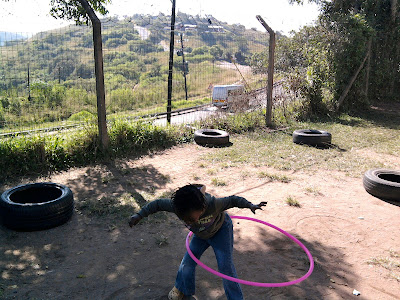Our main motivation for conducting the workshop was from the hearing screening results. We have found that many of the children fail tympanometry as a result of fluid in the middle ear cavity, and most of the children came in for testing with a running nose or a cough. Through hand washing the spread of germs is prevented, which means that children will be less likely to get a cold or the flu, and therefore less likely to get ear infections. We also noticed that there are no handles on the taps in the bathroom, so hand washing is not a consistent activity.
Many organisations have conducted research on the impact that hand washing can make. UNICEF found that hand washing with soap can prevent respiratory infections (which often result in fluid in the middle ear) by a quarter. The Centre for Disease Control and Prevention found that hand washing not only prevents sickness and diseases that can lead to death, but their research has shown that children who were given intensive hand washing promotion for 9 months, later reached developmental milestones 6 months earlier than the children who did not receive the hand washing promotion. You can read more about it here.
I recently came across a Youtube video of a project called Hope Soap that has started in South Africa. It is worth the watch, I LOVE the idea and it is sure to put a smile on your face :)
We started the day by dividing the children into their 3 different age groups so that we would have smaller groups to control, and started with a skit. The message of the skit was that we should wash our hands before eating, after using the toilet, playing outside, sneezing or coughing, picking up rubbish or petting animals. It was done in a fun, light hearted way, and we got the children involved by singing songs about hand washing with corresponding actions. Next our speechie friends did a hand washing demonstration on the correct way to wash hands and invited some of the children up to demonstrate what they had learned to their class.
We continued the workshop by giving some tips on ear care, such as not using Q-tips/ear buds. Even the teachers were surprised to hear that they should not be used to clean ears! Next we went on a litter hunt with the children and encouraged them to keep their environment clean and tidy. If you haven't read my post where I talk about the litter in the area and the preschool, here are some photos for you...
 |
| Litter in the play area after break time |
 |
| Litter in the community |
Once our hands were nice and dirty from picking up litter, we got all of the children around to wash our hands and practice what had been taught. It was slightly chaotic as they were all pushing to get to the front of the line, but at least they were enthusiastic about it! We had also bought a black bin that we were going to get the children to finger paint, however we ran out of time! The children are definitely looking forward painting it this coming Thursday.
I really hope that this small workshop will have made a BIG impact on the children at this school!



















